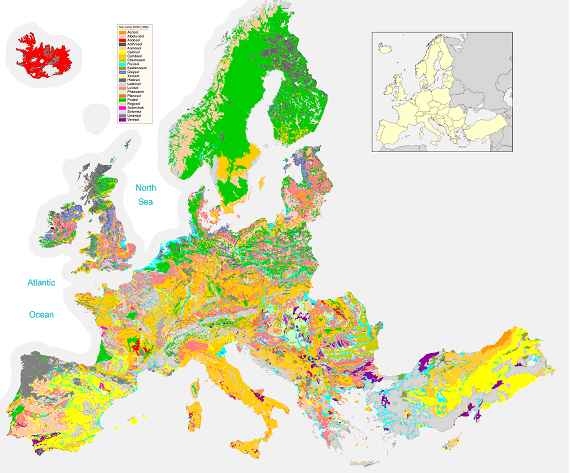Introduction to soil sciences
Benjamin Nowak
VetAgro Sup (Unit 512)
2021/09/23 (updated: 2021-09-27)
Pedogenesis
Pedogenesis is the process of soil creation from parent bedrock
The 3 steps of pedogenesis
| 1. Weathering | 2. Enrichment | 3. Horizonation |
|---|---|---|
| Degradation of parent materials | Addition of organic matter (required to be defined as soil) | Vertical differentiation of horizons (from top to bottom) |
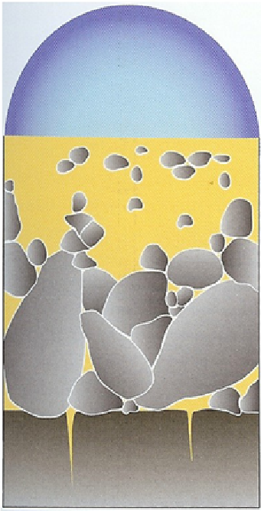 |
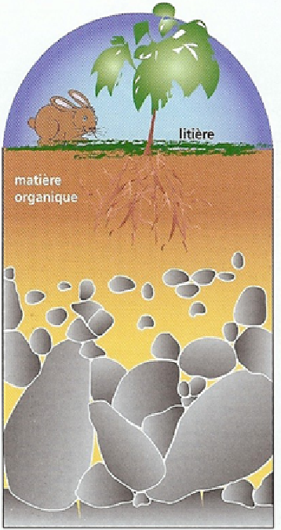 |
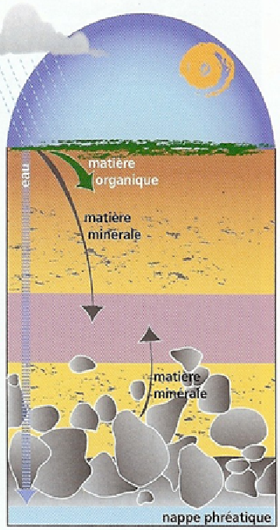 |
[Source] Dossier INRA "Le sol", Janvier 2009
Two layers of pedogenesis
Secondary pedogenesis on a rocky scree
Factors influencing pedogenesis
There are 5 main factors influencing the process of soil creation:
- Climate (Cl)
- Organisms (O)
- Relief (R)
- Parent material (P)
- Time (T)
This may be remembered as 'ClORPT' (Hans Jenny, 1941)
Soil=f(Cl,O,R,P,T)
The combination of these different factors gives a multitude of soils.
Climate
- T° and H2O influence how fast rocks weather: soils develop faster in warm, moist climates and slowest in cold or arid ones.
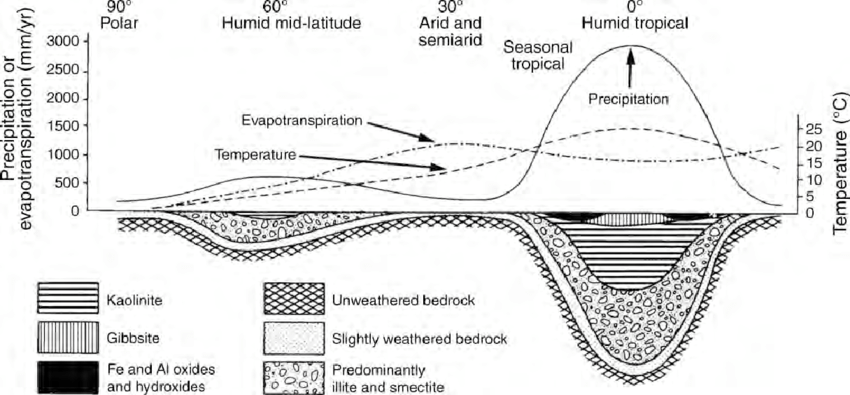
Organisms
Living organisms accelerate the weathering of the bedrock, through physical (root penetration...) or chemical (exsudate...) degradation
They stabilize the soil and limit erosion
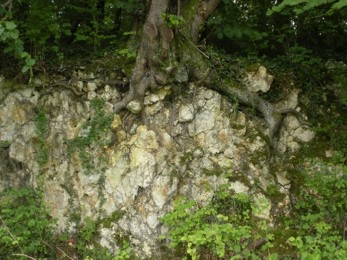
Organisms
Living organisms accelerate the weathering of the bedrock, through physical (root penetration...) or chemical (exsudate...) degradation
They stabilize the soil and limit erosion

- Mineral particles resulting from the alteration of parental bedrocks need to be enriched in organic matter to define a soil
Organisms
- Soil organic matter is an important carbon pool (~twice bigger that the atmospheric pool)
The fate of soil carbon can have a strong influence on climate change, depending on whether carbon is stored or mineralized
- Soil organic carbon is stabilized by the interaction with mineral particles (clay, limestone...)
- Soil organic carbon is mineralized by the respiration of aerobic organisms...
- But there are still many things to discover about the nature of soil organic carbon
Relief
Soil creation of soil only occurs if
alteration > erosion
Relief
Soils are generally shallow on slopes due to erosion...
...whereas deeper soils form at the bottom of a hill because gravity and water move soil particles down the slope.
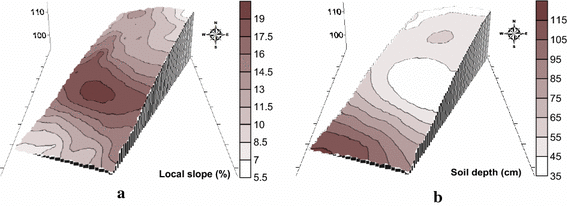
Parent materials
At the Earth's surface, all rocks are subject to alteration
Soils inherits traits from the parent material from which they formed
- For example, soils that form from limestone are rich in calcium, with high pH, while soils evolving from granite have low pH
As they evolve, soils can drift away from these inherited characteristics
The two main types of parent materials are:
- Magmatic rocks
- Sedimentary rocks
Parent materials
| Magmatic rocks | |
|---|---|
| Eruptive rocks | Plutonic rocks |
| Rock resulting from a surface solidification of the lava | Rocks that solidified from a melt at great depth |
| Example: Basalt | Example: Granite |
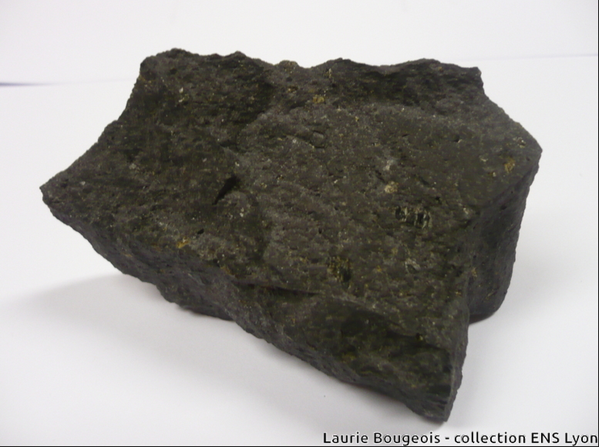 |
 |
Parent materials
| Sedimentary rocks | |
|---|---|
| Formation at the surface of the earth or oceanic crust by : (i) Erosion, transport then sedimentation (detrital sedimentary rocks) OR (ii) Accumulations or precipitations of biological or physico-chemical origin in the oceans (limestones...) | |
| Silicates (Mostly SiO2) | Carbonates (Mostly CaCO3) |
| Example: Sandstone | Example: Limestone |
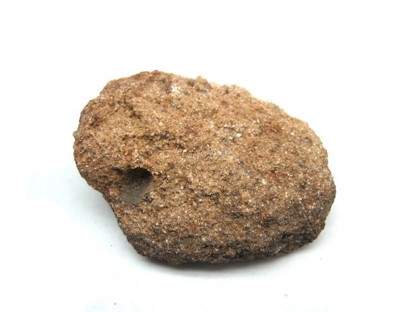 |
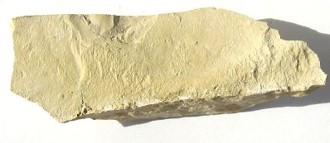 |
Time
- The process of pedogenesis is slow and the creation of a soil takes several tens to hundreds of thousands of years.
But if soils seem stable on a human scale, they are in constant evolution on a geological scale.
The following presentation will present one example of a chronosequence
This example will present one possible evolution of a limestone bedrock
An example of soil chronosequence
A sequence of related soils that differ in their degree of profile development because of differences in their age.
Soil denominations
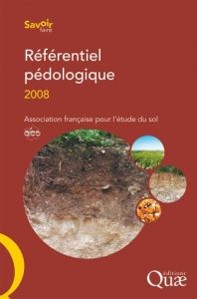
The names of the soils used in the rest of the presentation come from the French pedological reference system
This reference system describes the characteristics of soil horizons and soil types
Rendosol
General profile for
a 'very young' soil
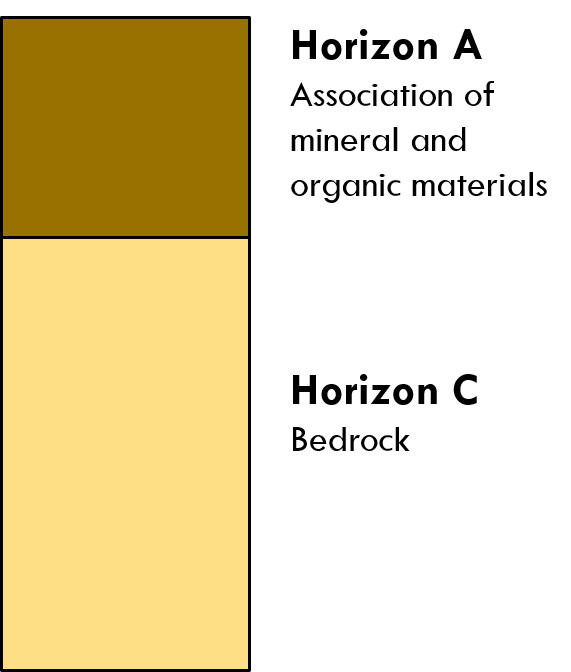
Specific profile for a rendosol
Aca Horizon A with limestone
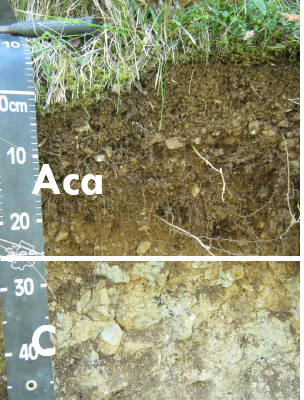
Horizon C Limestone bedrock
Clay formation
- Weathering of bedrock minerals, such as feldspar, produces clay
As minerals, clays are phyllosilicates, characterized by alternating layers of silica (tetrahedral sheet) and aluminum (octahedral sheet)
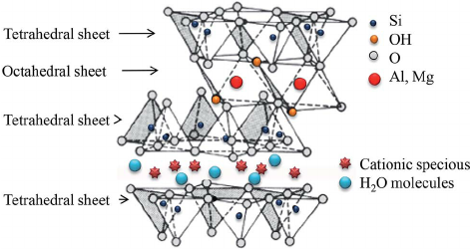
- Si sheets are negatively charged and can thus 'store' cations (K+, Na+...) or H2O (because of its polarity)
Clay formation
Soils are differentiated according to their Si:Al ratio
Due to the retention capacity of the silica sheets, the higher the ratio, the higher the storage capacity of the soil
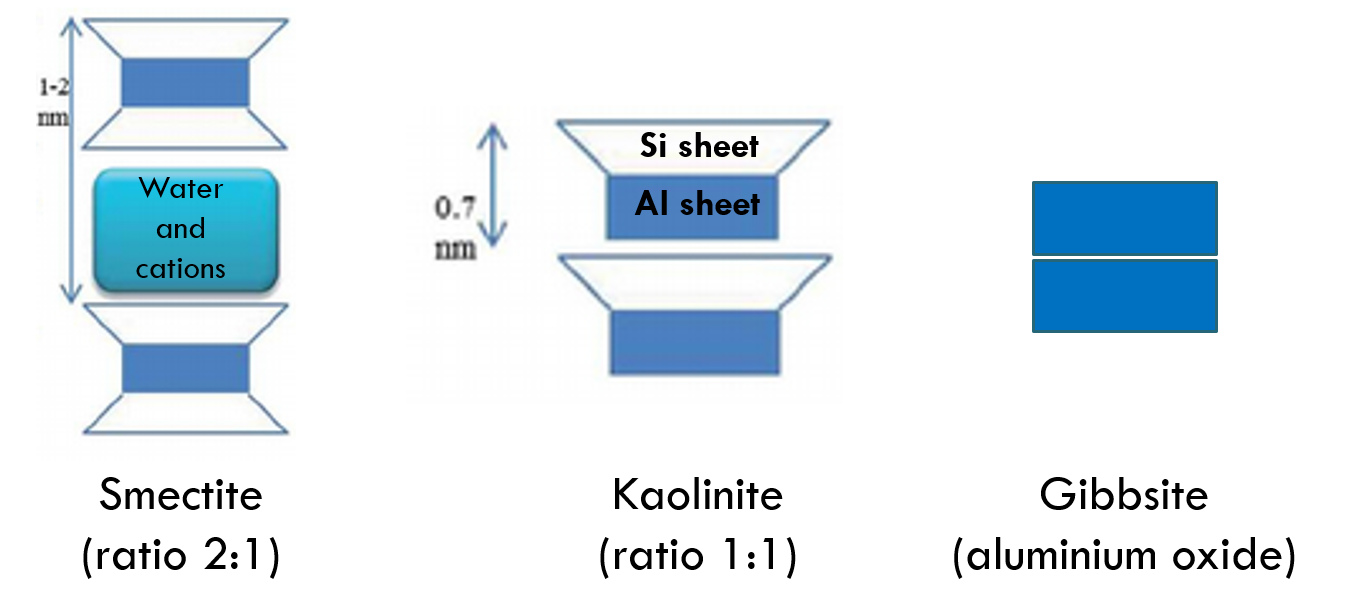
- 2:1 clays are more likely to be expansive
Calcisol
General profile for
a 'young' soil
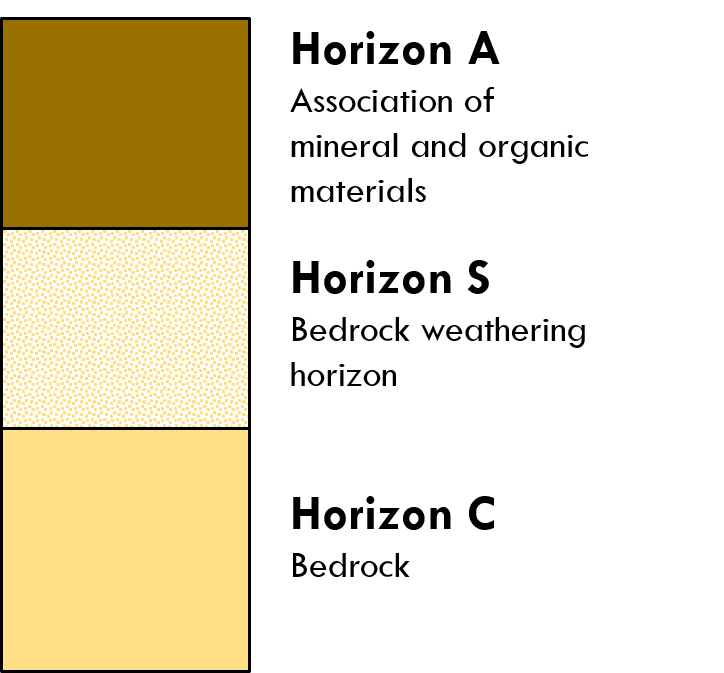
Specific profile for a calcisol
Sca Horizon S with limestone
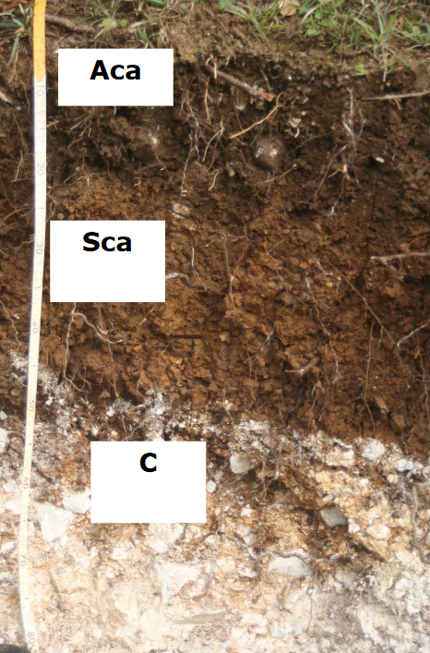
Decarbonation
CaCO_{3} + CO_{2} + H_{2}O ⇄ 2HCO_{3}^{-} + Ca_{2}^{+}
Rainwaters absorb atmospheric CO2, and these rainfalls erodes limestone, which is then transformed into HCO3- and Ca2+.
The residual solution is leached out at depth
So the horizons will be decarbonated from top to bottom
Brunisol
General profile for
a 'mid-aged' soil

Specific profile for a brunisol
Horizon S without limestone
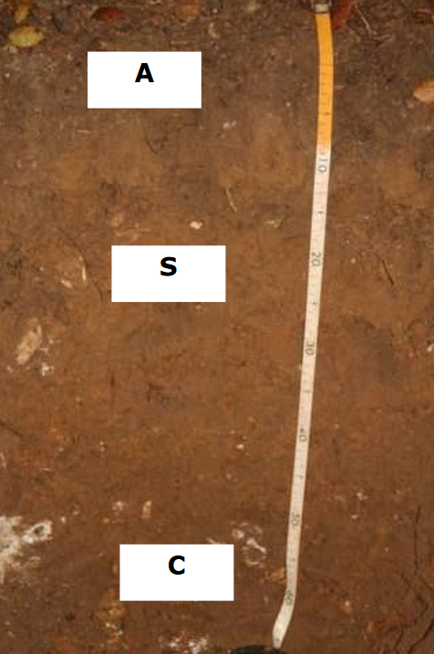
First part of the chronosequence
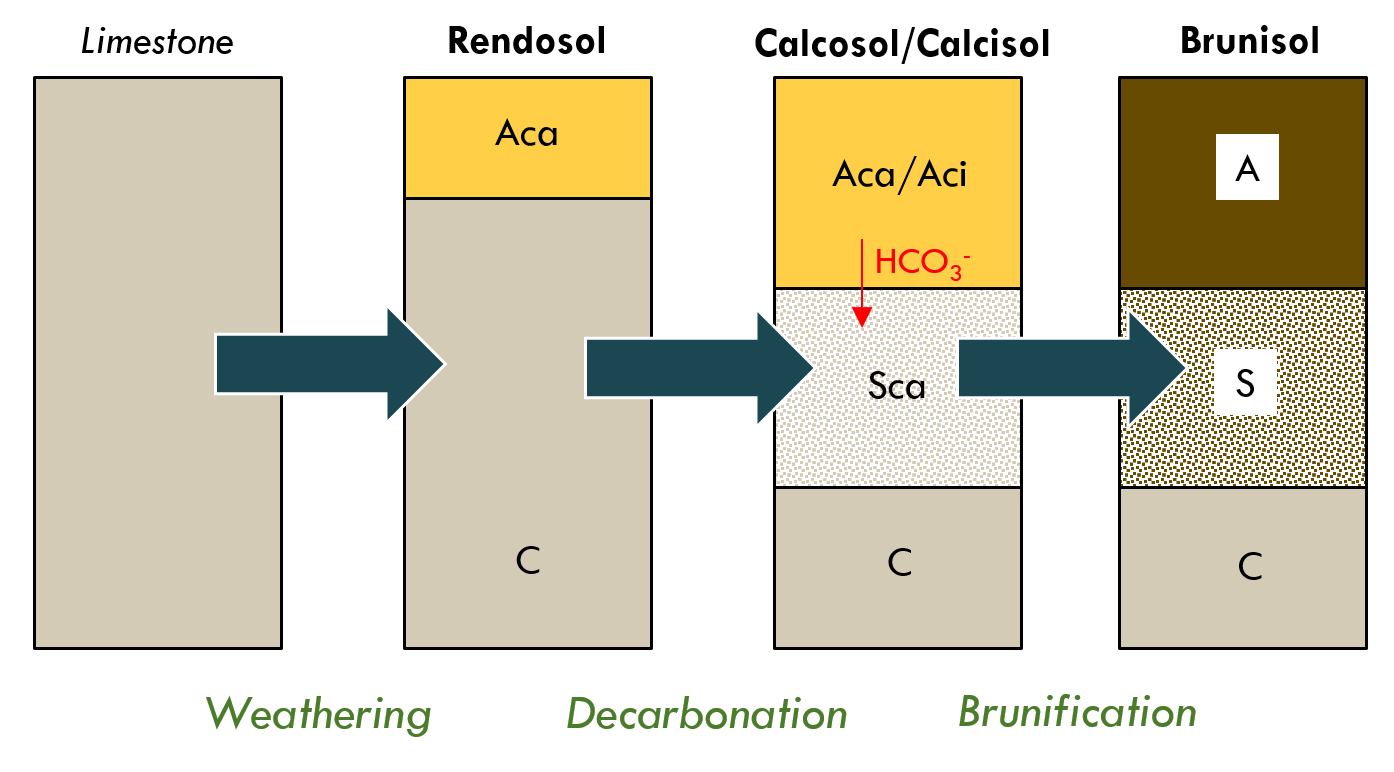
Luvisol
General profile for
an old soil
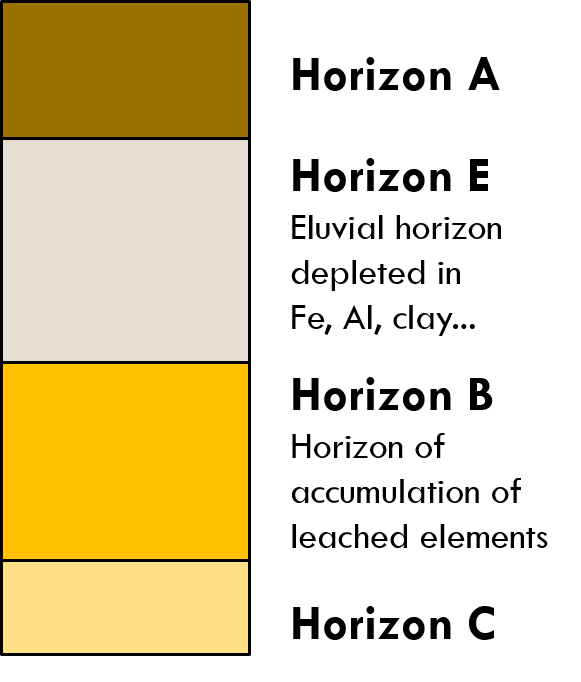
Specific profile for a luvisol
Clay leaching from E to B(t)
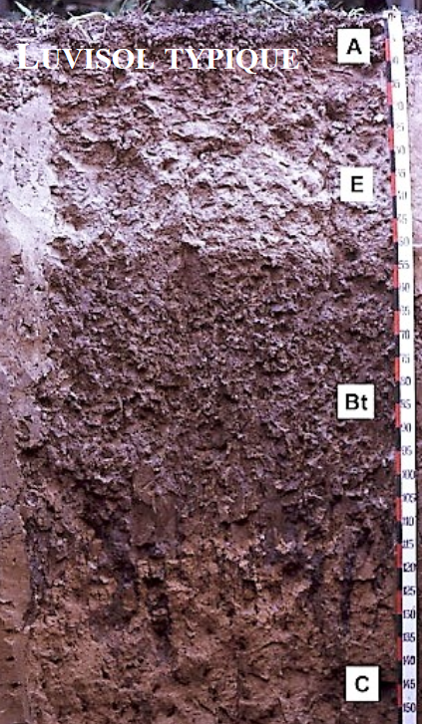
Water dynamics
A B horizon enriched in clay is called Bt
Bt horizon induce water accumulation, which will intereact with Fe through redox reactions (electron exchanges with oxygen)
Pseudogley with oxidation traces: markers of temporary flooding (O2 after flooding)
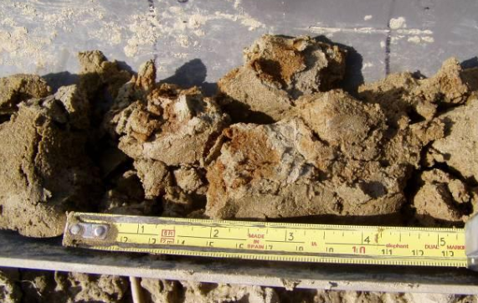
Gley with reduction traces: markers of permanent flooding (no O2)
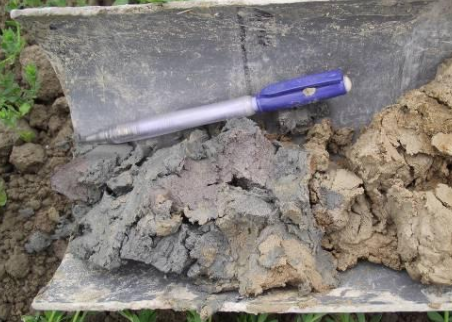
Luvisol redoxic
General profile for
an old soil

Profile for a redox luvisol
Temporary flooding in B(tg)
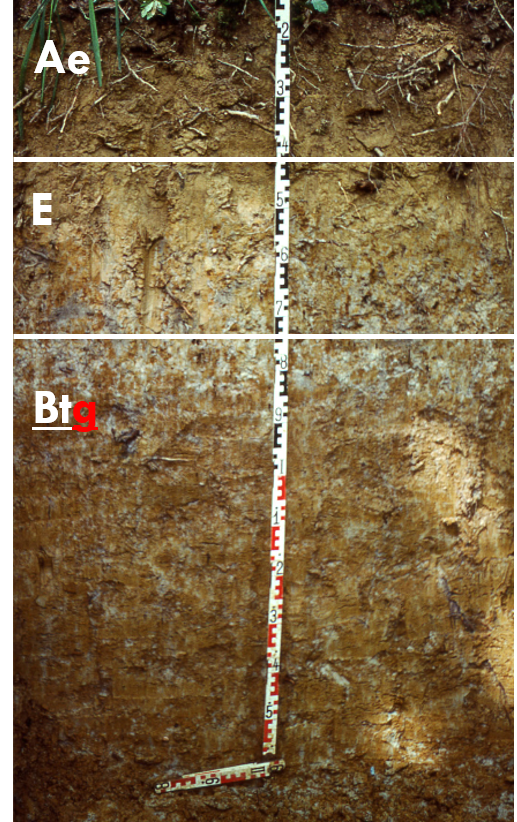
Reductisol
Soil with permanent flooding
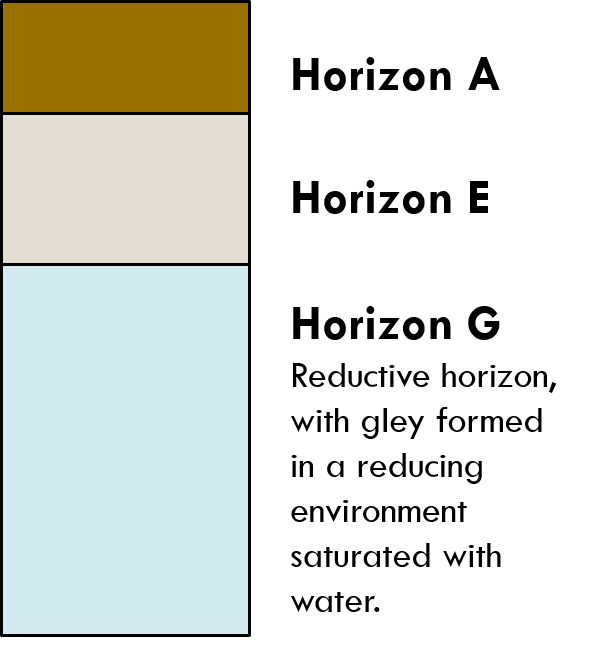
Profile for a reductisol
Characteristic 'blue' color of G
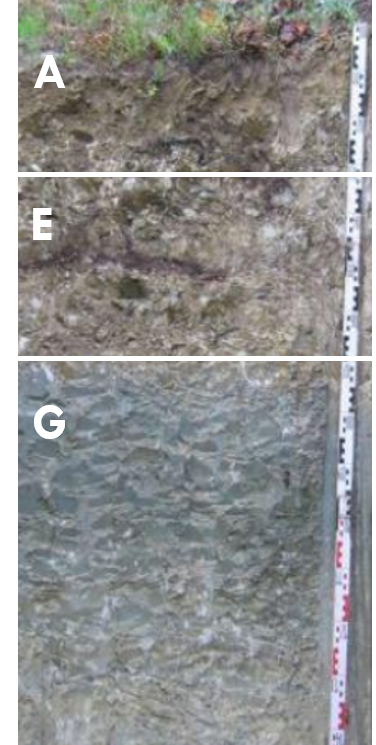
Continuation of chronosequence
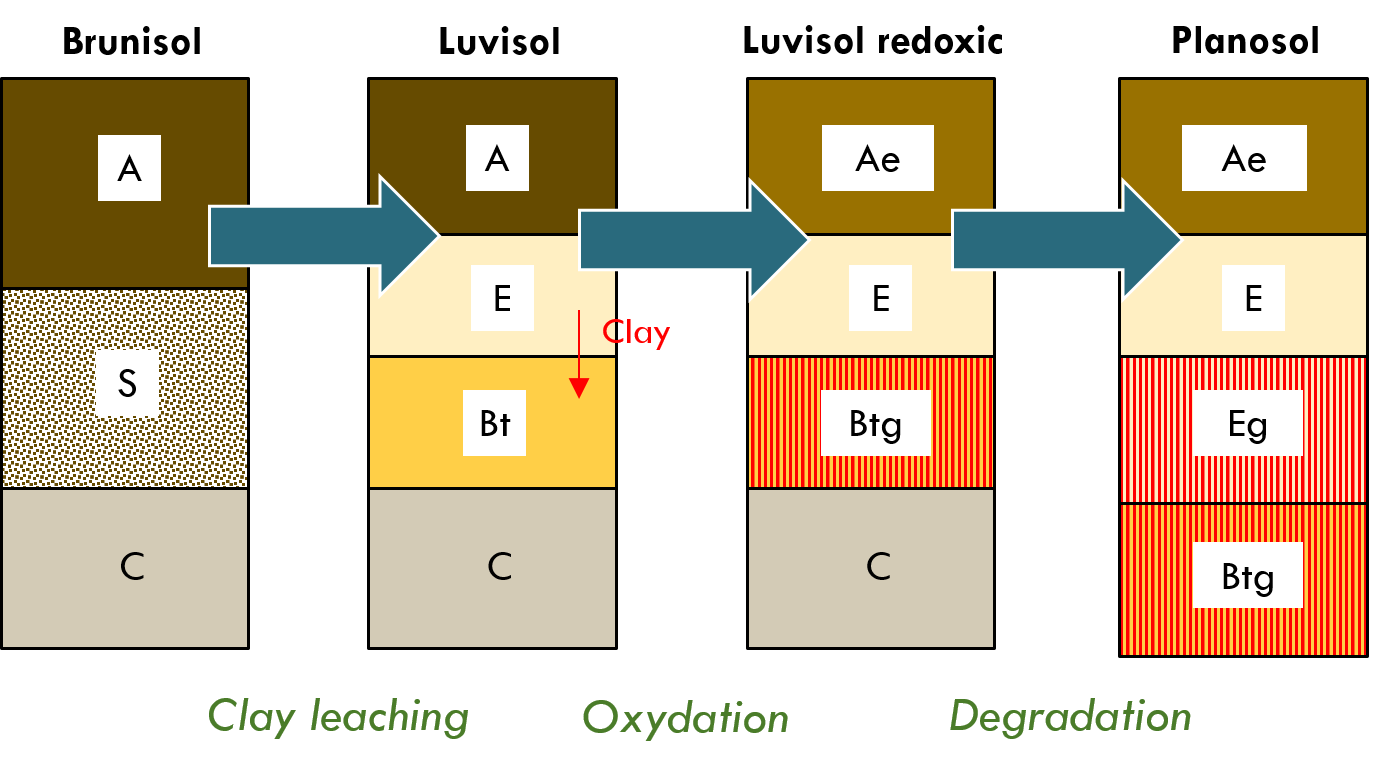
Soil evolutions
- Given examples represent only few possibilities of soil evolution, there are a large number of alternatives
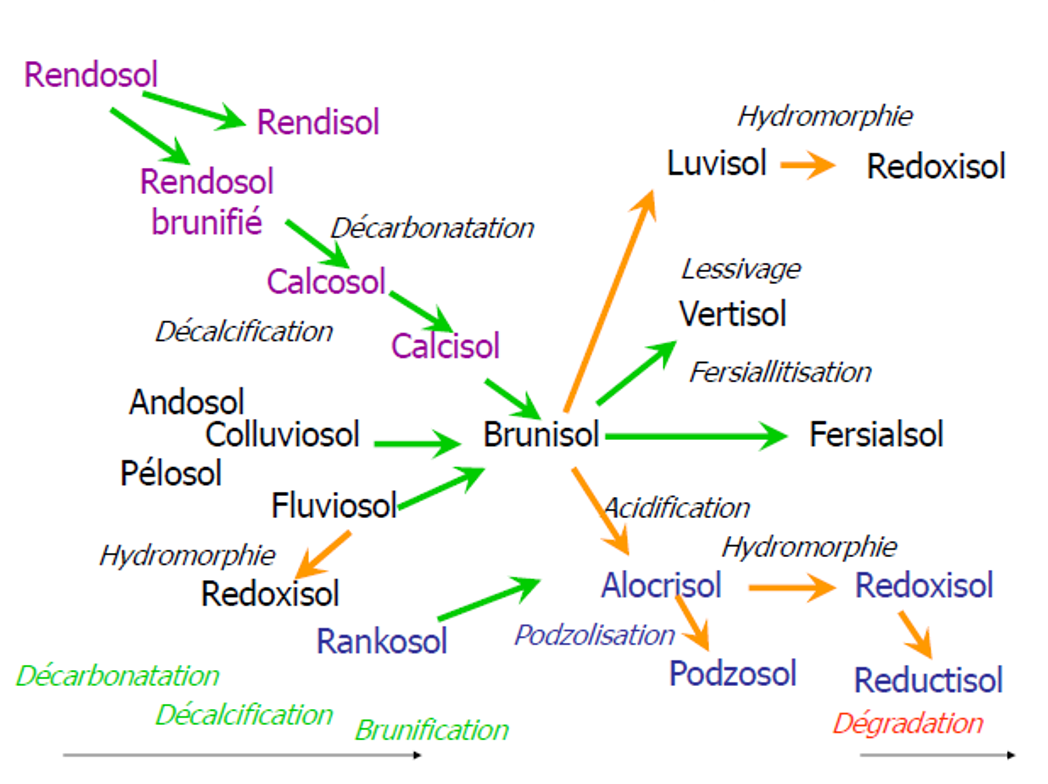
[Source: Alain Ruellan]
Soil maps
Examples of available references
French soil map

Regional soil reference system: soil-landscape Map at 1:250,000 scale
Available at Géoportail
